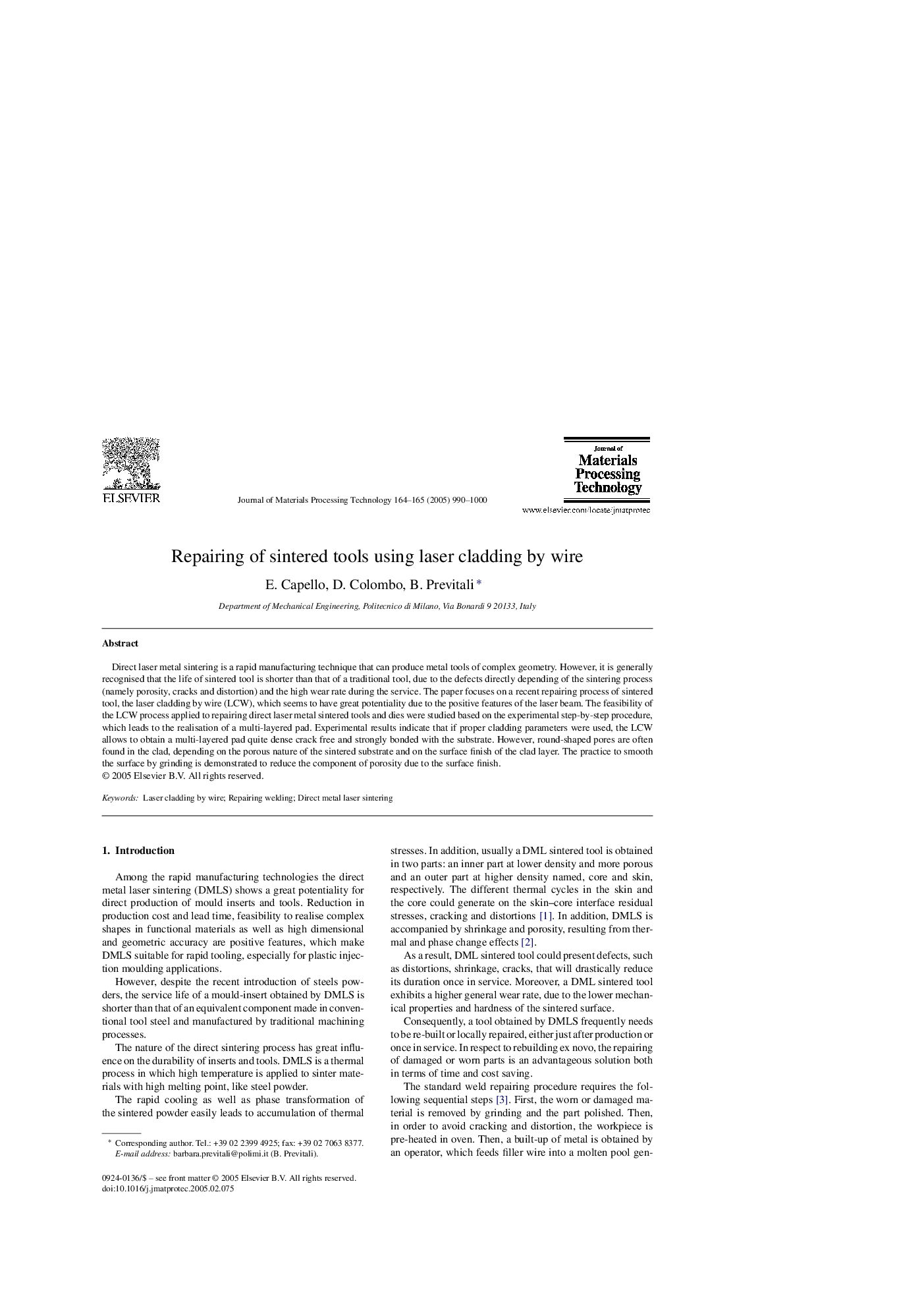| Article ID | Journal | Published Year | Pages | File Type |
|---|---|---|---|---|
| 9708962 | Journal of Materials Processing Technology | 2005 | 11 Pages |
Abstract
Direct laser metal sintering is a rapid manufacturing technique that can produce metal tools of complex geometry. However, it is generally recognised that the life of sintered tool is shorter than that of a traditional tool, due to the defects directly depending of the sintering process (namely porosity, cracks and distortion) and the high wear rate during the service. The paper focuses on a recent repairing process of sintered tool, the laser cladding by wire (LCW), which seems to have great potentiality due to the positive features of the laser beam. The feasibility of the LCW process applied to repairing direct laser metal sintered tools and dies were studied based on the experimental step-by-step procedure, which leads to the realisation of a multi-layered pad. Experimental results indicate that if proper cladding parameters were used, the LCW allows to obtain a multi-layered pad quite dense crack free and strongly bonded with the substrate. However, round-shaped pores are often found in the clad, depending on the porous nature of the sintered substrate and on the surface finish of the clad layer. The practice to smooth the surface by grinding is demonstrated to reduce the component of porosity due to the surface finish.
Keywords
Related Topics
Physical Sciences and Engineering
Engineering
Industrial and Manufacturing Engineering
Authors
E. Capello, D. Colombo, B. Previtali,
